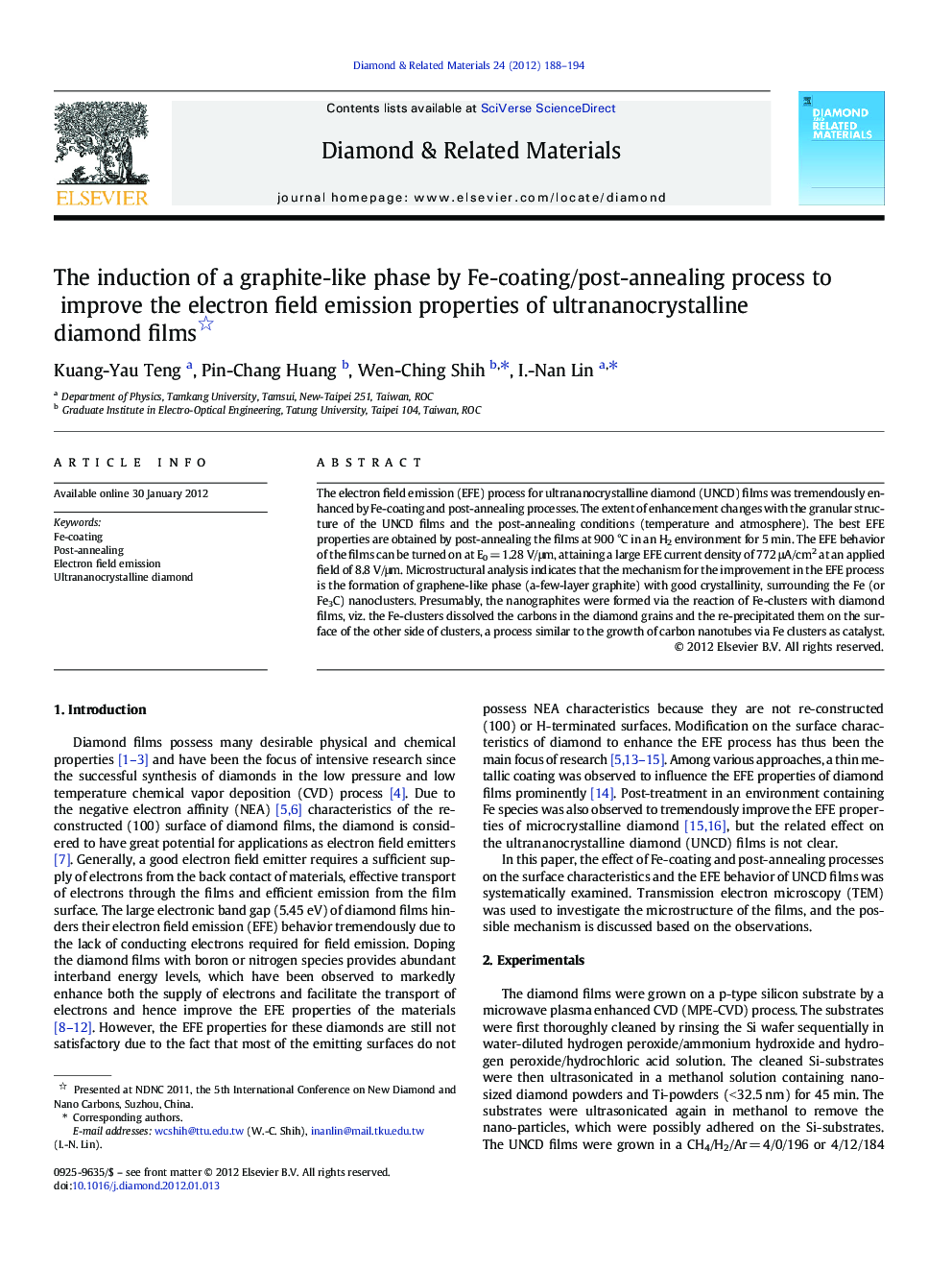| Article ID | Journal | Published Year | Pages | File Type |
|---|---|---|---|---|
| 702442 | Diamond and Related Materials | 2012 | 7 Pages |
The electron field emission (EFE) process for ultrananocrystalline diamond (UNCD) films was tremendously enhanced by Fe-coating and post-annealing processes. The extent of enhancement changes with the granular structure of the UNCD films and the post-annealing conditions (temperature and atmosphere). The best EFE properties are obtained by post-annealing the films at 900 °C in an H2 environment for 5 min. The EFE behavior of the films can be turned on at E0 = 1.28 V/μm, attaining a large EFE current density of 772 μA/cm2 at an applied field of 8.8 V/μm. Microstructural analysis indicates that the mechanism for the improvement in the EFE process is the formation of graphene-like phase (a-few-layer graphite) with good crystallinity, surrounding the Fe (or Fe3C) nanoclusters. Presumably, the nanographites were formed via the reaction of Fe-clusters with diamond films, viz. the Fe-clusters dissolved the carbons in the diamond grains and the re-precipitated them on the surface of the other side of clusters, a process similar to the growth of carbon nanotubes via Fe clusters as catalyst.
► The effect of Fe-coating and post-annealing process on EFE of UNCD was examined. ► TEM was used to investigate the microstructure of the films. ► The extent of enhancement changes with the post-annealing conditions. ► The mechanism for improvement is formation of good crystalline nanographites.
